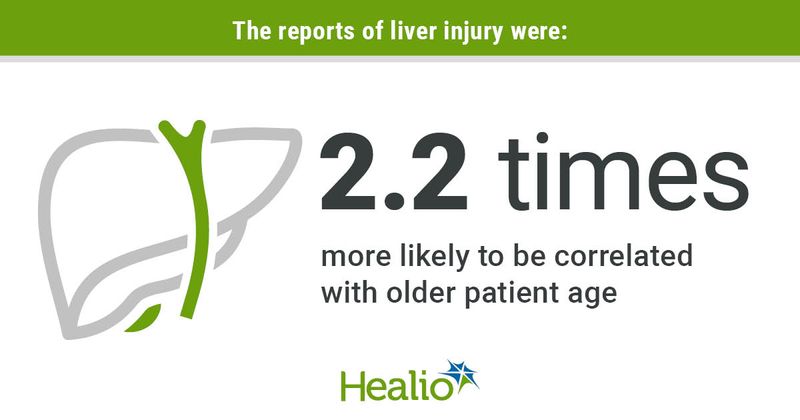Age may affect patient susceptibility to drug-induced liver injury
Mitochondrial mechanisms of toxicity may be an important cause of drug-induced liver injury, according to a study published in Acta Pharmaceutica Sinica B.
“This study examined liver injury reports submitted to the [FDA] Adverse Event Reporting System (FAERS) for drugs associated with hepatotoxicity via mitochondrial mechanisms compared with non-mitochondrial mechanisms of toxicity,” Payal Rana, Drug Safety Research & Development, Pfizer, and colleagues wrote.

Rana and colleagues determined the frequency of hepatoxicity at both a group level and individual drug level. They calculated a reporting odds ratio as the effect measure. Investigators assessed the demographic influence for drug-induced liver injury (DILI) risk. The top drug classes with the highest reporting OR included antineoplastic, antiviral, analgesic, antibiotic and antimycobacterial drugs. The top 20 drugs with the highest reporting OR values included drugs with both mitochondrial and non-mitochondrial injury mechanisms; however, the top four drugs (benzbromarone, troglitazone, isoniazid, rifampin) correlated with mitochondrial mechanisms of toxicity.
The researchers used a chi-square test to assess the statistical significance of differences in categorical variables such as age group, DILI severity, drug label and report type between two categories of DILI drugs. They used univariate logistic regression analysis to determine the unadjusted correlation of age and sex with mitochondrial mechanisms of toxicity DILI group compared with non-mitochondrial mechanisms of toxicity DILI group.
“Between the two DILI groups, reports for DILI involving mitochondrial mechanisms of toxicity had a 1.43 (95% CI, 1.42-1.45) times higher odds compared to drugs associated with non-mitochondrial mechanisms of toxicity,” Rana and colleagues wrote.
Researchers observed a higher mean patient age among reports for drugs linked to mitochondrial mechanisms of toxicity (56.1 ± 18.33 [SD]) compared with non-mitochondrial mechanisms (48 ± 19.53 [SD; P < .0001). This demonstrated that age may have an impact in susceptibility to DILI via mitochondrial mechanisms of toxicity, according to Rana and colleagues.
Results from the univariate logistic regression analysis showed that the reports of liver injury were 2.2 times more likely to be correlated with older patient age (OR = 2.2; 95% CI, 2.12-2.26). Investigators compared these results with reports that involved patients aged younger than 65 years. Women were 37% less likely than men to be included in live injury reports for drugs correlated with mitochondrial toxicity mechanisms (OR= 0.63; 95% CI, 0.61-0.64).
